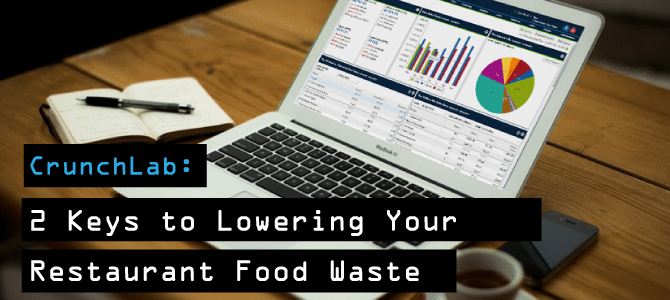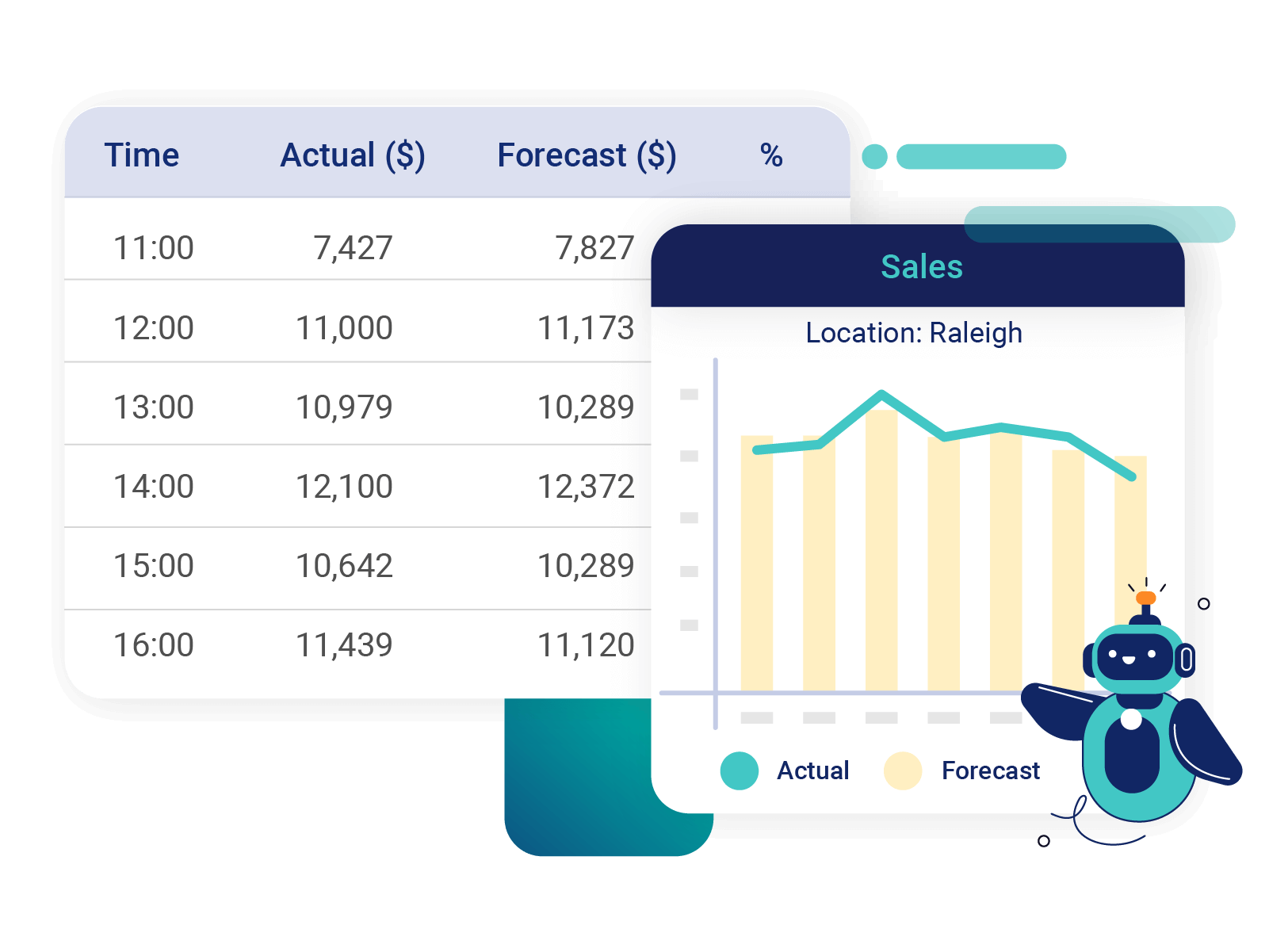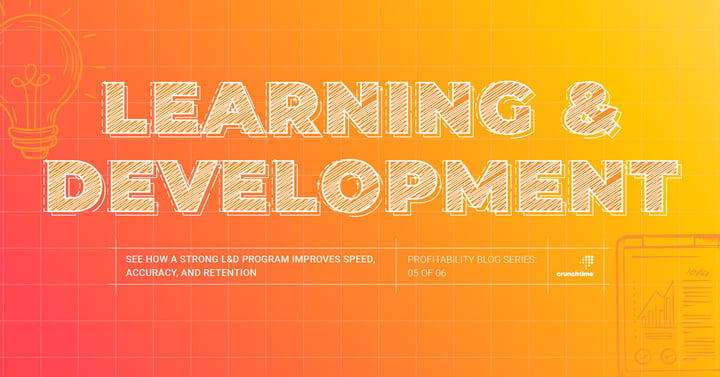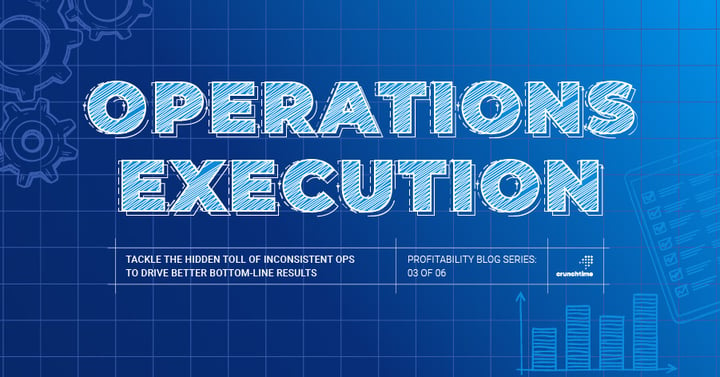
- Home
- Crunchtime Blog
- Predict, Prepare, Prosper: The Essential Role of Forecasting in Restaurant Success

Predict, Prepare, Prosper: The Essential Role of Forecasting in Restaurant Success
Sales forecasting sets the world's best restaurant brands apart from the competition. Here's why.
If you’re looking to elevate your restaurant's performance, understanding the intricacies of forecasting can help you make the most informed decisions on the path to success.
An accurate forecast provides restaurants with a clear picture of future sales so they can plan operations accordingly. But even for a seasoned restauranteur, sales forecasting can be difficult. The restaurant industry is fast-paced and unpredictable. Customer preferences shift quickly, and sales fluctuate due to holidays, local events, weather, and other situations.
Forecasting requires the analysis of numerous inputs, metrics, and historical data points, which can quickly become overwhelming for busy restaurant teams. For managers who manually calculate the sales forecast, this process takes an average of 4 hours per week. This not only consumes valuable time, but manual methods are more prone to human error, inaccuracies, and bias, all of which can significantly impact operations.
Given the complexity and time constraints of manual forecasting, it's clear why so many leading restaurant brands have turned to more efficient methods for planning. When every decision can impact the bottom line, the ability to accurately predict and prepare for customer demand can make the difference between a profitable restaurant and a struggling one.
Here's how the world's leading restaurant brands utilize accurate forecasting to help them grow and prosper:
1. They optimize their inventory levels by ordering the right amounts
Inventory management is a careful balancing act — too much inventory creates costly waste and unnecessary spending, while too little inventory results in missed sales and disappointed customers. By accurately forecasting sales throughout the day, restaurants can align inventory levels with customer traffic, meaning they are less likely to run out of popular menu items or end up with costly waste. Using a forecasting software that has suggested ordering is the easiest way to do this, as it will tell you exactly how much product to order.

Don't “guesstimate” your inventory needs
Without a forecasting tool, restaurant managers will often rely on a “gut feeling” to forecast, just using their intuition or an educated guess to predict how much food to order. Unfortunately, this is not a scalable process for restaurants on the path to growth. Simply guessing order quantities can easily result in overstocking, which ties up valuable storage space and leads to spoilage and waste, especially with perishable items. Given the rising cost of food, all restaurants should aim to avoid these unnecessary costs, as they directly impact profitability.
Given the rising cost of food, overspending on inventory can quickly add up. Choosing a modern sales forecasting tool will predict exactly how much food your restaurant should purchase for a given time period based on past sales. Remember that historical data is key to forecasting demand, as past behavior is the best predictor of future behavior.
Crunchtime uses historical data to suggest a purchase order quantity that the manager can easily approve or modify. This takes the guesswork out of ordering and makes it easier for brands to stay in control of food costs. By ordering the right quantities needed to meet future demand, restaurants can reduce their on-hand inventory, avoid waste, and boost cash flow.
2. They staff every shift to meet demand
Labor is one of the biggest expenses facing restaurants today. However, creating an optimized staff schedule can be tricky, even for the most experienced restaurant manager. A recent study revealed that restaurants are not properly staffed for 38% of shifts in a given week. This includes shifts that are under- or overstaffed. If a manager overestimates demand, they risk having too many employees on shift, which can erode profit margins.
Conversely, underestimating demand can leave a restaurant short-staffed, leading to frustrated customers from long wait times, diminished service quality, and unhappy employees. However, knowing how many staff to schedule throughout the day is difficult. Similarly to ordering inventory, managers often “guesstimate” or use a “gut feeling” to schedule staff, but the reality is that guesswork doesn’t always lead to optimally staffed shifts.
How to move beyond “guesstimating” your scheduling needs
Restaurant scheduling software can alleviate the burden of manually forecasting labor needs. An advanced forecasting algorithm can analyze your historical sales to predict how busy your restaurant will be, while factoring in various inputs, like guest counts and holidays.
Once you know your expected sales, the scheduling platform uses your forecast to automatically recommend exactly who to staff during each hour of the day, and at each station within the store to achieve full shift coverage, all while maintaining your profit margins. Even the most experienced restaurant manager would struggle to manually calculate all of the different factors and inputs that a forecasting algorithm can handle. With less manual effort and more automation, your restaurant can say goodbye to guesswork, and you can rest assured the right number of staff will be scheduled to accommodate your peak hours and slow hours.
3.They keep the kitchen prepared
It’s no secret that customers expect a consistent and high-quality dining experience. Accurately predicting demand can help you prepare to meet customer expectations, whether that means having enough staff to handle a busy dinner rush or ensuring that you have all the necessary ingredients for a special menu item. To avoid the kitchen getting backed up with an influx of orders, timely food prep is also essential for your back of house teams.
Forecasting tools can recommend specific tasks, like how many pounds of hot french fries need to be prepped for the lunch rush at noon or how many frozen chicken wings need to be thawed. This can help you avoid quality issues and long wait times that often hinder sales. When food is consistent and fresh, you can create more satisfied customers who will be eager to return and recommend your restaurant to others.
4. They utilize strategic menu planning
Forecasting helps restaurants analyze customer preferences and buying patterns over time. With insights about your most popular menu items and least popular items, operators can make data-driven decisions to adjust the menu, whether that involves introducing new items or removing the underperforming ones. Learn more about menu engineering here.
5. They use forecasting to drive their financial planning
Effective forecasting is critical to budgeting and financial planning because it provides a clearer picture of expected revenue and expenses. Without this information, leadership is in the dark and unable to make informed decisions about capital investments, pricing strategies, cost control measures, and other important operational functions. Forecasting provides teams with greater control over long-term planning and enables restaurants to set realistic goals and benchmarks based on expected demand, ultimately positioning the organization for sustainable growth.
The End Goal: Master the Art of Forecasting to Boost Your Profitability
Sales forecasting is more than just a predictive tool for restaurant brands today; it’s a science and an art that can significantly enhance a restaurant operation by driving optimized inventory, improved staffing, informed financial decisions, and exceptional guest experiences.
Restaurants that embrace sales forecasting as a core part of the operation will find it easier to navigate the complexities of the industry in the future. Investing time and resources into mastering forecasting is a smart move that positions restaurants for long-term success and growth in a competitive market, but don't go it alone.
Learn how accurately forecasting demand can transform your restaurant operation. Get in touch with us for a customized demo of our platform.
Share this post
Related


Part 5: A Profit-First Approach to Resilient Restaurant Operations


